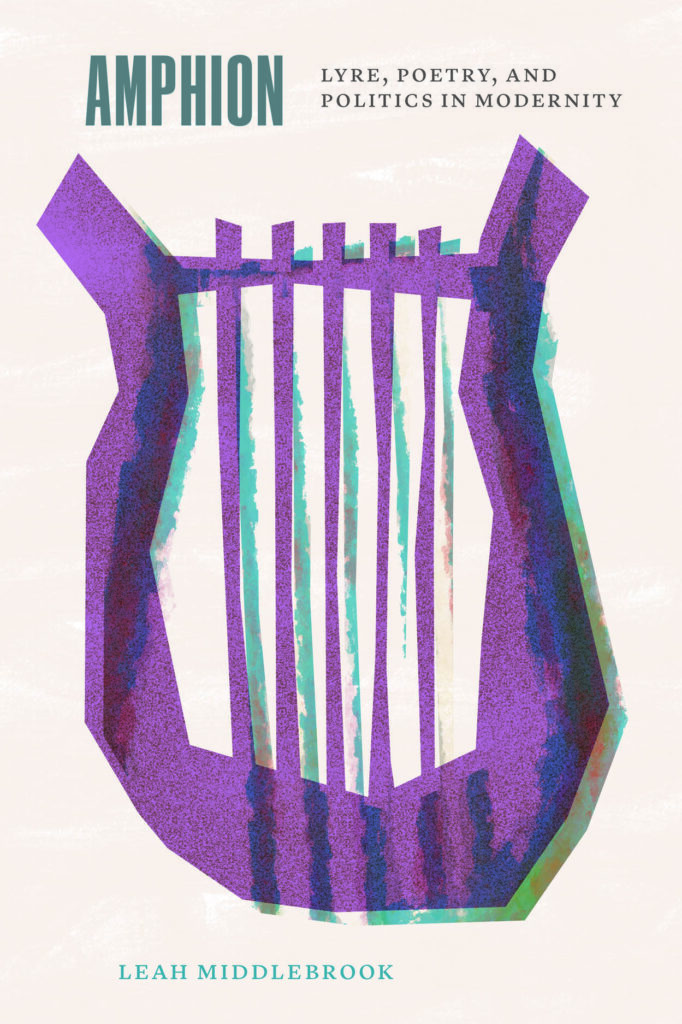This post is part of our Research Initiation Scheme for 2024-2025.
On Wednesday 30th October, the Core Disciplinary Research Group in Modern Languages hosted Leah Middlebrook, Associate Professor of Comparative Literature and Spanish at the University of Oregon. Professor Middlebrook gave a seminar on the findings of her new book, Amphion: Lyre, Poetry and Politics in Modernity (University of Chicago Press, 2024).

Professor Middlebrook opened her presentation with the story of the construction of the city-state of Thebes, as told through the myth of Amphion, who with the playing of his lyre made the stones move to build walls to form this great city. The figure of Amphion has continued to be prominent for his role in music and architecture. He was also key to the development of lyric theory and practice, as Professor Middlebrook demonstrated. However, Amphion was pushed to the academic and cultural periphery in the 18th and 19th centuries.
The idea that Amphion represents is that fragments converge to create something abstract and solid, in particular, creating bulwarks of language. This is best encapsulated according to Professor Middlebrook, in the reference to Luis Pérez Ángel, as cited in the 1602 work Discurso en loor de la poesía (by anonymous Peruvian poet “Clarinda”) whose poems were described there in an explicit Amphionic analogy as “build[ing] […] walls” for a city, a concept that Middlebrook revisited later in the seminar. This came in the form of the image depicting Mercury (Hermes) guiding Amphion as he played the Lyre, an instrument of Hermes’ own invention. The image connotes the idea that while Amphion’s lyre is associated with the civic form that is the polity, it is also a figure that represents the power of lyric to deconstruct. This was a poignant suggestion made by Middlebrook as Thebes was reputed to be a political disaster. It was a city that, although capable of keeping its enemies out, could not, however, deter its own social erosion. Middlebrook described this dynamic as ‘The mercurial Poesis’, since the Theban stones represent both construction and destruction. The lyre animates collective action, but that action can result in ruin.
This concept allows one to reflect on the idea that, depending on how it is used, artistic inspiration can lead one to create or deconstruct cultural boundaries. Middlebrook then posed a series of questions that one must bear in mind when approaching lyric poetry, with two of the most prominent being: what is this poem doing? And where is it leading us?
Middlebrook then spoke about the significance and influence on subsequent lyric culture of a passage from Horace’s Ars Poetica that refers to Amphion, paired with Orpheus, and reminded the audience that when Horace associates Amphion with ‘musa lyrae sollers’, he underlines the link between poetry and empire. Professor Middlebrook also discussed the features of lyric as a social phenomenon, reminding us that poetry was a divinely inspired yet human created endeavour, as was the case in the construction of Thebes. Each of us can be roused to create and form our divinely inspired states, we serve as an inspiration to collective action. As a result, what we create might be born out of an existing concept, but can in turn be taken and used to reveal a new one.
Professor Middlebrook gave a revealing and insightful seminar regarding a concept that I have never studied to any great extent. In our contemporary society, it is paramount to be aware of how language is used as a tool to build, inspire, but also to undo. I was also compelled to take into consideration how new perspectives on a given topic are revealed to us through the erosion of long-held notions.
Report by Ciarán Harte, final-year undergraduate in Spanish and Portuguese
I had a wonderful time! Many thanks for inviting me, and thank you for this thoughtful writeup!
Sincerely,
Leah Middlebrook